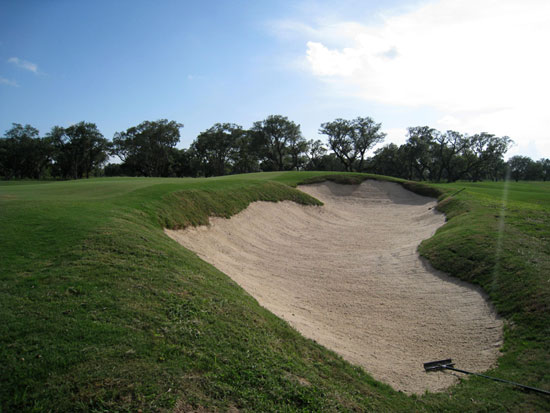I can't speak for everyone, but I like contoured greens. However, it seems one major result of an architect adding contour is the size of the green grows. From an agronomic standpoint this makes sense as heavy contour and transitions reduces area for cups, so if you want contour and an abundance of hole locations, you need size.
I think you can build contour without large greens. One thing you have to do is make sure the traffic patterns don't exacerbate the fact that hole locations might be limiting. On the positive side, heavy contour encourages surface drainage so that may be a plus when dealing with limited cupping space.
I think the modern agronomic models outlaw heavily contoured greens that are on the smallish side. But, with agronomic advancements, why shouldn’t we be gaining the ability to push limits instead of going in the other more conservative direction?
I realized I don’t have any real good pictures of our 14th at Wolf Point. I’ve attached two, the first from the right side bunker, and the second from the much smaller left side bunker. Neither really shows off the wicked contours of this green. This is not only one of our smaller greens, but also the only green with bunkers tight to the green on two sides.
This green is heavily contoured, but just a touch under 5K sq ft. obviously we don’t get much play so a green like this would never be built in the “real” world. Why? If we have the tools, and require our supers to have advanced degrees, and years of experience, why do we have to play it so safe?

